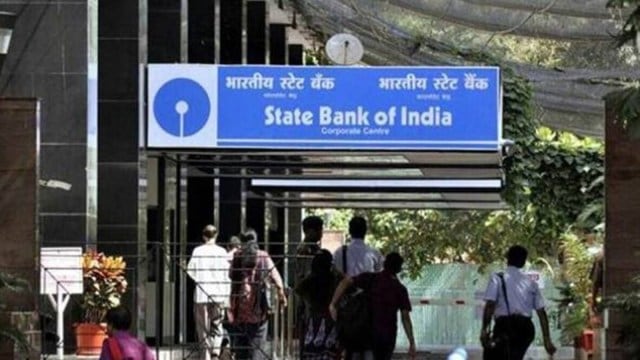SBI raises interest rates on fixed deposits by up to 50 bps
A fixed deposit is an investment instrument where an amount is deposited with banks for a set period and at a fixed rate of interest.
 The interest rate on term deposits maturing between three years to less than five years has been revised up by 25 bps to 6.75 per cent from 6.5 per cent.
The interest rate on term deposits maturing between three years to less than five years has been revised up by 25 bps to 6.75 per cent from 6.5 per cent.
State Bank of India (SBI) on Wednesday raised interest rates on fixed deposits (FDs) by up to 50 basis points (bps) across various tenors.
The bank’s move to raise interest rates on retail term deposits (below Rs 2 crore) is likely to be followed by other lenders.
A fixed deposit is an investment instrument where an amount is deposited with banks for a set period and at a fixed rate of interest.
Rates on FDs are important for those, especially senior citizens, who are looking for safe investment options. For retail term deposits maturing between seven days to 45 days, SBI has raised the interest rates by 50 basis points to 3.5 per cent from 3 per cent.
The bank is offering an interest rate of 4 per cent, up from 3.5 earlier, to senior citizens on the same tenor. One basis point is one-hundredth of a percentage point. For fixed deposits of 46 days to 179 days maturity, the interest rate has been increased by 25 bps to 4.75 per cent from 4.5 per cent. Senior citizens are being offered an interest rate of 5.25 per cent (5 per cent earlier) on this tenor, as per the information on the SBI’s website.
Deposits maturing between 180 days to 210 days, the new rate offered is 5.75 per cent as against 5.25 per cent earlier. The rate offered to senior citizens on this tenor is 6.25 per cent as against 5.75 per cent earlier.
The revised rate for deposits maturing between 211 days to less than one year is 6 per cent compared to the existing 5.75 per cent. Senior citizens are getting an interest rate of 6.5 per cent on this maturity. The interest rate on term deposits maturing between three years to less than five years has been revised up by 25 bps to 6.75 per cent from 6.5 per cent.
The interest rate on term deposits maturing between three years to less than five years has been revised up by 25 bps to 6.75 per cent from 6.5 per cent.
The bank has kept the interest rates on fixed deposits maturing between one year to less than two years, two years to less than three years and five years and up to 10 years have been left unchanged at 6.8 per cent, 7 per cent and 6.5 per cent respectively.
The bank has also increased interest rates on domestic bulk deposits (Rs 2 crore and above) by up to 50 bps, effective December 27.
Earlier this month, SBI raised its marginal cost of fund-based lending rate (MCLR) by 5-10 basis points (bps) across different tenors. MCLR is the minimum interest rate below which banks cannot lend. It reflects the trends in banks’ cost of borrowing.
Since May 2022, the RBI has raised the repo rate – the key policy rate – by 250 bps. Banks have transmitted the entire 250 bps increase to their repo-linked external benchmark-based lending rates (EBLRs). Revision in the MCLR happens with a lag. Full transmission of a 250 bps hike in the repo rate to deposit rates is yet to happen.
Between May 2022 and October 2023, the weighted average lending rate (WALR) on fresh rupee loans rose by 199 bps, while that on outstanding loans rose by 112 bps. The weighted average domestic term deposit rates (WADTDRs) on fresh deposits and outstanding deposits rose by 228 bps and 172 bps, respectively, during the same period.



- 01
- 02
- 03
- 04
- 05




























